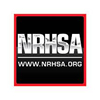Q. I am new to model railroading. What is gauge and what do the different scales mean?
A. Gauge is the distance between the tracks. In North America, full size railroads have a gauge of 4' 8 1/2" between the rails. The table below shows the gauge of the most popular model railroad scales in North America.
Scale is the size of the modeled item in relation to the full size item. The NMRA (National Model Railroad Association) has defined the most poular scales in North America as Z, N, HO, S, O, and G. Scale is the size of the model compared to the size of the real life item. The chart below lists the most popular North American model railroad scales. As an example, N scale is 1:160 the size of the real thing and HO is 1:87 the size of the real item.
NMRA popular railway scales
|
|---|
Choosing a scale for your model railroad will involve making some choices in key areas. Number one is space. How much space you can devote to your layout is often the prime driving force in make a scale choice. With each scale being roughly double the size of the immediately smaller scale, O and S can wind up commanding a lot of real estate.

The second consideration iis availability of product. In North America, HO is the modt popular scale commanding about 80% of the industry. That means the widest selection of locomotives, rolling stock, buildings and accessories.
N scale has a large following and being about half the size of HO can be attractive as you can fit double the size of a layout in a given space compared to HO. More and more products are available on N scale so there is now a very good selection of trains and accessories in N scale.
As we age, some of us find it easier to see and handle larger objects. O scale fills that need nicely. While it can take up a lot of room, it has advantages in having available large, animated displays. The locomotives also have impressive sound and smoke effects. Young hands also find this scale easier to handle and it can be more forgiving during rough handling.
Finally G sale is the largest of the common scales. It can often be found circling overhead near the ceiling in many restaurants and bars. It is also quite popular for those who enjoy garden railroading. This is where the garden is integrated into the layout and becomes part of the scenery. Plants are carefully chosen for size and type to mimic those found in the "full size" world. Impressive water and mountain effects are often added to make these miniature railroads quite breathtaking.
Q. Can you explain the difference between DC and DCC power systems?
A. DC, or direct current, uses variable voltage to control the speed of a single train. A train can have one or more locomotives. The variable voltage is supplied by a powerpack or "throttle". If you want to control more than one train at a time, you need a second powerpack, or one that has two throttles built-in. You must also implement "block wiring". Block wiring allows you to isolate the two throttles from each other on different sections of track. Only one throttle can control one train. This raises the complexity of the wiring to another level. This is not protoypical, but is a requirement for running two independent trains under DC control. A simple way to put this is if you have one powerpack hooked to your layout, any locomotive that is sitting on the rails will begin to move when power (DC voltage) is applied to the tracks. To make the locomotives run apart from each other, you must have one on a section of track controlled by one powerpack, and the other locomotive on a section of track powered by a second powerpack. Each section of track is isolated, or insulated, from the other.
DCC, or digital command control, uses a different approach to power the motors. Instead of the motor receiving power from the rails, a DCC equiped locomotive's motor receives power from a decoder. Think of a decoder like a small computer chip installed inside a locomotive. On a DCC layout, the track is held at a constant voltage, and the decoder inside the locomotive determines how much of that power is passed to the motor. A DCC throttle communicates with the decoder. Since each decoder has a unique "address", a DCC throttle can communicate with multiple locomotives, thus allowing more than one train to run on the same section of track at the same time. This is prototypical.
The beauty of DCC is that wiring now becomes much simpler as you no longer need to electrically isolate different sections of track. I mentioned an "address" assigned to each decoder. That unique address is what makes everything flow smoothly. You simply select the "address" of a specific decoder inside a locomotive, and your throttle now "talks" to only that address. Any commands you send, from speed, to lights, to horns and bells, are only sent to that locomotive. Now that you have one train running, you may want to control another. Simply dial up the address of the second locomotive and now that train is under your control. Your first train will continue on its merry way until you command it to do something else.
But wait, the fun doesn't end there. Add a second throttle to your DCC system, and now a partner can control a train at the same time as you. One of you can run a mainline train, the other can be switching in a yard. Have a steep grade and need help getting uphill? No problem. Your partner can push you up the hill just like the big boys do, then back off and return to the yard. Don't have partner for your session? Again no problem. Just tell your DCC system to treat two locomotives as if they have the same address. This is called consisting, or multiple unit lashup. Put two or three locomotives on the head of that big coal drag, tell your DCC system to treat them as a single engine, and now your throttle sends the exact same commands to all your locomotives at the same time. You can even configure your lashup to run nose to tail, tail to tail, only use the lead headlight, only use one engines horn, etc. Now you're running like the big boys!
DCC wiring does use the same polarity as DC. That is, one rail is positive and one rail is negative. You must keep the rails in sync no matter what system you use. Under DCC, this is much easier with the use of auto reversing units. Let's say you have a section of track that reverses back on itself. Think of it like a cul-de-sac in a neighborhood with a small lawn in the middle. You enter the cul-de-sac going north and with you sitting in the left-hand, or engineers seat. When you look left you are looking west. Let's call this the + side of the lane. Your passenger is sitting in the right-hand, or firemans seat. This is the - side of the lane. When they look right they are looking east. You loop around the cul-de-sac and come back out on the same road you entetred. However, now you are heading south and are looking out your left window to the east. You are in the - lane. Your fireman is now looking out to the west and to the + side of the lane. But you entered the cul-de-sac in the "+" mode and your fireman entered in the "-" mode. Nothing changed your polarity when you looped around. At the point where you rejoin the original lane, you now have a short-circuit. An auto reversing unit installed on the layour automatically detects this electrical state and fixes it on the fly. You do not need to do anything
On a DC layout, using the scenario above, you would need to install toggle switches to reverse the polarity of the layout outside the loop while your train is inside of it. This complicates the wiring process significantly.





